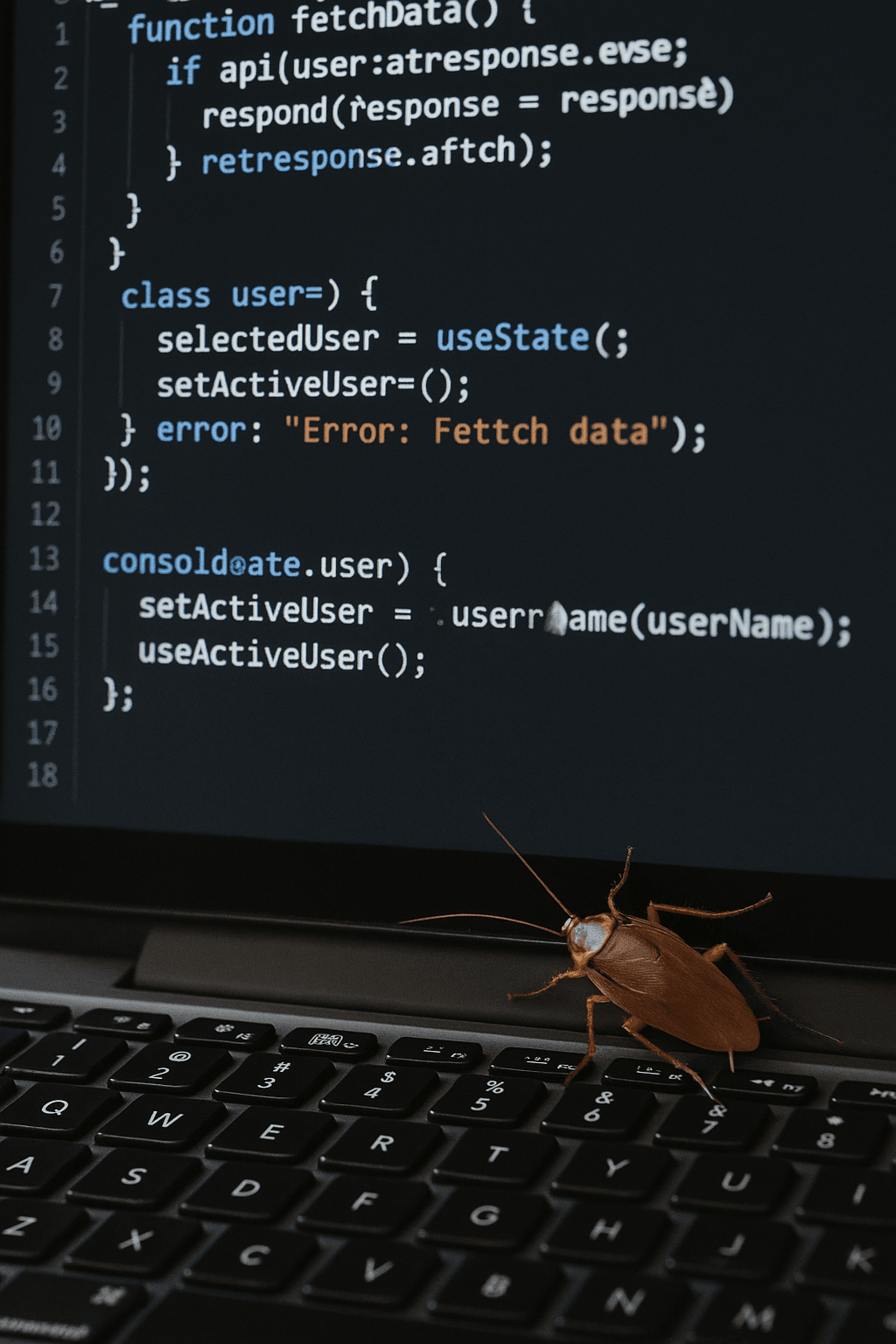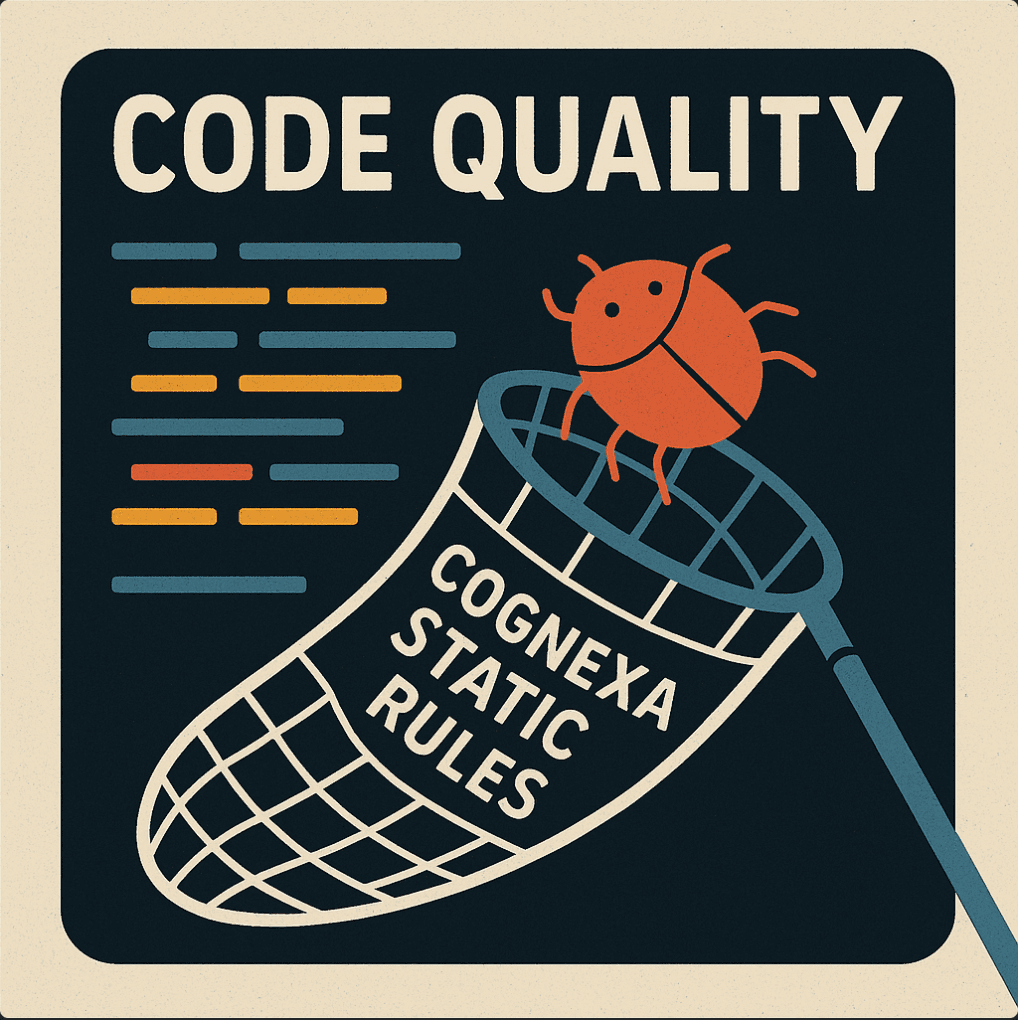Beyond “It Doesn’t Work”: A Deep Dive into Code‑Quality Bugs
Co
Beyond “It Doesn’t Work”: A Deep Dive into Code‑Quality Bugs—and How Cognexa’s Static Rules Catch Them Early
Even when a feature “works,” hidden quality defects can cripple a codebase over time. At Cognexa, we don’t wait for these issues to surface in production—we’ve embedded a library of static rules and governance processes to catch them the moment they’re written. Let’s explore the nature of code‑quality bugs, why they matter, and exactly how our static‑rules approach keeps our software robust.

What Are Code‑Quality Bugs?
Code‑quality bugs aren’t missing features; they’re structural flaws that quietly undermine long‑term health:
Readability Issues
Symptoms: Obscure names, inconsistent formatting, duplicated logic.
Impact: Slows onboarding; increases misinterpretation risk.
Maintainability Violations
Symptoms: Excessively long functions or classes, tight coupling, magic constants.
Impact: Single change cascades unpredictably; refactors become perilous.
Performance Pitfalls
Symptoms: Inefficient loops, unnecessary allocations, blocking calls.
Impact: Latency spikes under load; infrastructure costs balloon.
Security Gaps
Symptoms: Unvalidated inputs, missing boundary checks, hard‑coded secrets.
Impact: Opens doors to injection attacks, data breaches, compliance fines.
Scalability Antipatterns
Symptoms: Global mutable state, synchronous IO in async contexts.
Impact: Deadlocks, race conditions, outages as traffic grows.
Real‑World Snippets from Cognexa Projects
Hidden Memory Leak
In a data‑processing microservice, a missing unsubscribe in error paths caused steady heap growth. Our static rule for “unmatched subscribe/unsubscribe calls” flagged the imbalance immediately in CI, long before any memory spike.
Bloated Controller
A REST controller began surpassing 300 lines of conditional logic. Our “max function length” rule broke the build, prompting a split into focused handlers and reducing average response time by 40%.
Credential Leakage
A stray property file with embedded tokens failed an “no plaintext secret” static check. The pipeline blocked the merge, and the developer was guided to inject the secret via our secure vault integration instead.
Cognexa’s Static‑Rules
Rule Definition & Versioning
We maintain a shared Rule Repository: each rule (e.g. “no duplicated logic beyond X lines” or “cyclomatic complexity ≤ 10”) lives as a versioned entry.
Every rule includes: purpose, code samples, severity level, and upgrade path.
Automated Rule Enforcement
On each commit, our CI invokes the static‑rules engine, applying the full rule set against changed files.
Violations produce clear, actionable feedback: file path, line range, rule description, and remediation suggestions.
Rule Governance
A rotating Rule Council of senior engineers reviews proposed rule additions or adjustments each sprint, balancing strictness with practicality.
When a rule matures or proves too noisy, it’s refined or deprecated via the same governance channel.
Custom Rule Extensions
Beyond generic checks, teams can author project‑specific rules—e.g., “all services must log trace IDs on entry” or “entity classes require annotation X”—and merge them back into the central repo after review.

Tracking Progress with Metrics
Rule Violation Trends
Dashboards track weekly violation counts per rule and per module—allowing teams to spot areas needing focused cleanup sprints.
Complexity Heatmaps
We visualize average function and class complexity, correlating against recent merges to measure refactoring impact.
Onboarding Success
New engineers complete a “rule‑driven refactor task” in their first week, with mentors ensuring they internalize both rules and the rationale behind them.
Continuous Improvement
Sprint retros include “Which rules blocked us? Were any rules too strict or too lax?” leading to data‑driven adjustments.
Technical‑Debt Sprints
We reserve 15–20% of capacity each sprint solely for clearing accumulated violations—keeping our codebase fresh and reducing build‑blocker risk.
Strangler‑Fig Refactoring
Legacy components with the most violations get incrementally replaced by cleaner modules, guided by our static rules to ensure consistency.
Summary
Functional correctness is a baseline. At Cognexa, our static‑rules framework—backed by rigorous governance, clear metrics, and an evolving rule set—ensures that code is not only “working” but is maintainable, performant, and secure from day one. By catching quality bugs at the moment they’re written, we sustain velocity, reliability, and developer morale, delivering software that stands the test of time.
